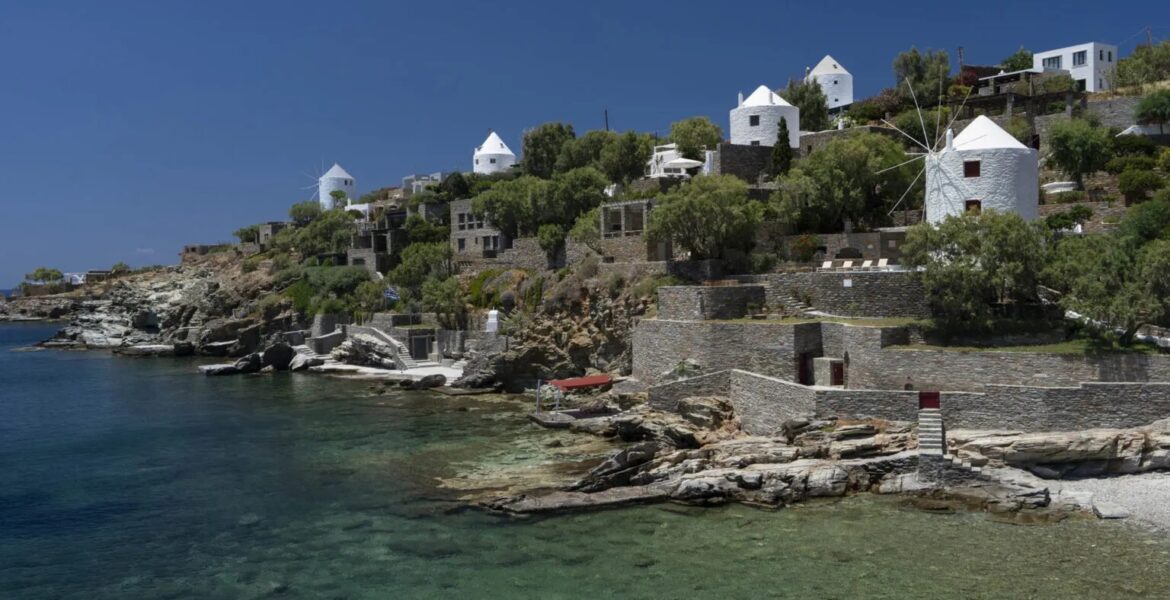Koundouros is a beach near Athens with golden sand and blue-green waters.
Those who love Kea (or Tzia, if you prefer its less ancient name, which prevailed from the Turkish occupation onwards) and visit it regularly have much to recommend to those planning to travel there for the first time.
Kea is an island that, due to its proximity to the coast of Attica, is ideal for short trips, weekends or long weekends, which has a beautiful capital – Ioulis, 8 kilometres from the port of Korissia (or Livadi), where the ship will drop you off.
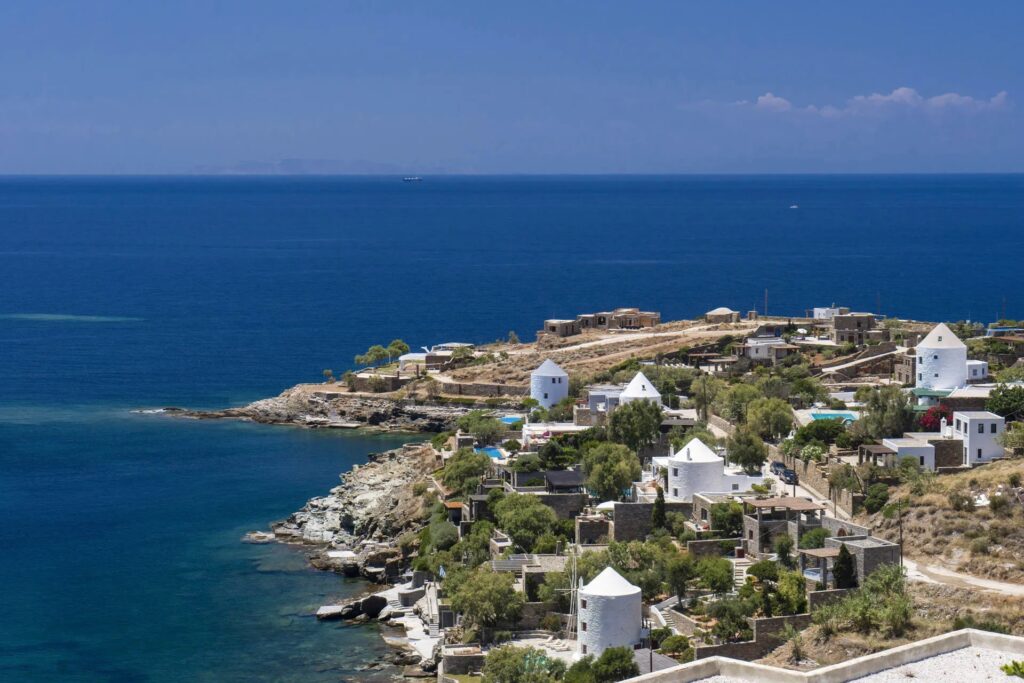
However, you should not miss the opportunity to visit Koundouros, which stretches across the cove of the same name.
It is one of Kea’s most beautiful and cleanest beaches, consistently awarded the Blue Flag, and idyllically dotted with typical Cycladic windmills.
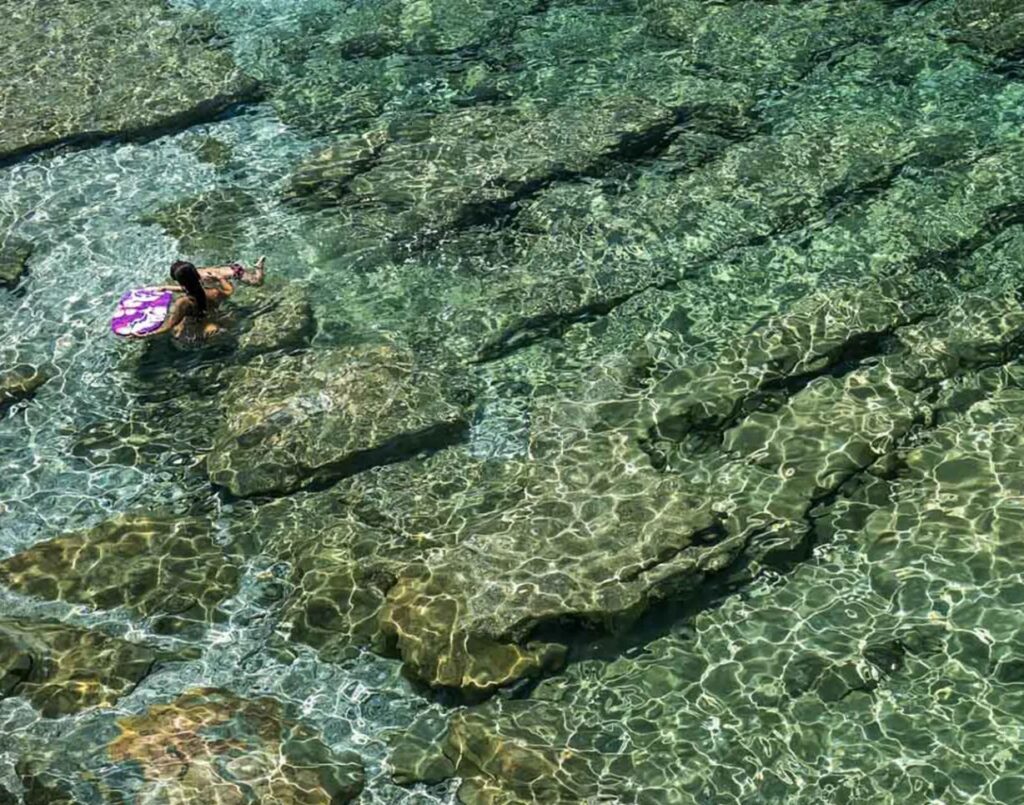
Around it, at an altitude of just 1 metre above sea level, rises the settlement of the same name with the aforementioned windmills, some of them surviving to this day as country houses.
According to the 2011 census, there are 17 permanent residents living there.
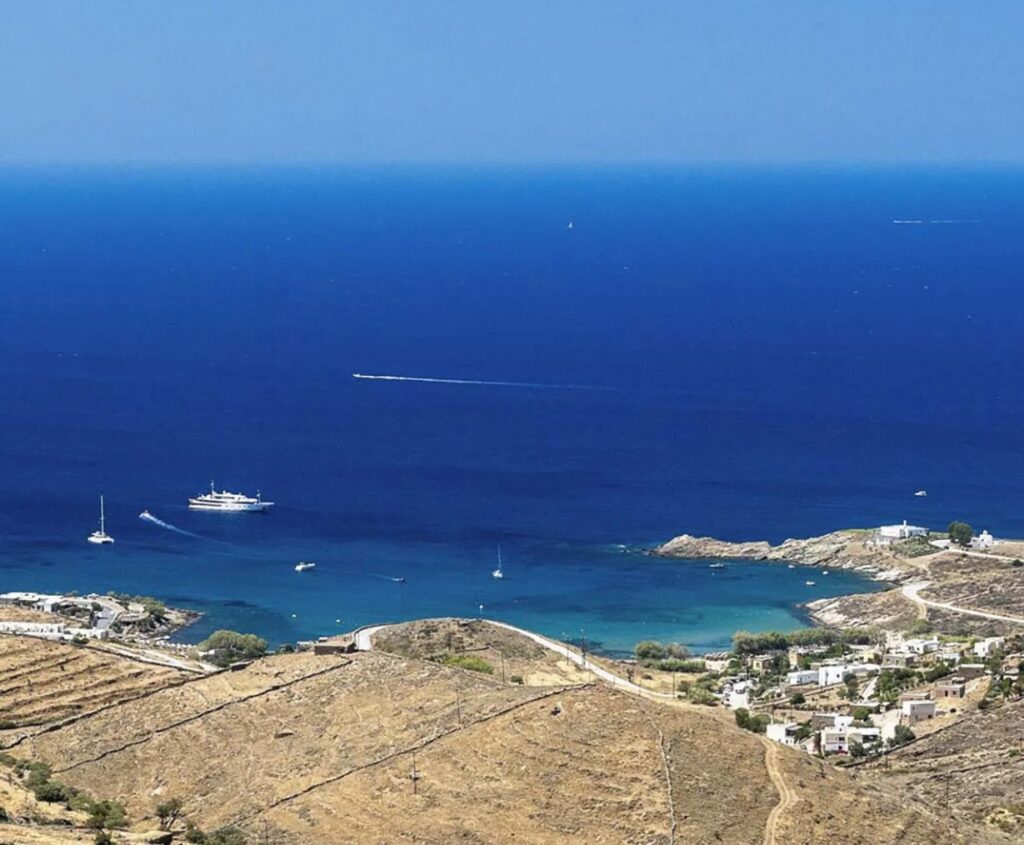
The area has a long history, reaching 2,500 years, as it was once home to Nirissos, a coastal settlement that served as the port of Poiessa, which was one of the four cities that made up the Tetrapolis of ancient Kea.
The modern Koundouros only became known this century. As a result, it became one of the most popular beaches on Kea, gaining an air of cosmopolitanism and a reputation as a safe anchorage for luxury (and non-luxury) boats.
Of course, the geography of the southwestern beaches of Kea plays an important role in this latter, as it has endowed the bay of Koundouros with a position naturally protected from the northern winds.
The rest of the landscape is authentically Cycladic, similar to what one sees on the other islands of the famous cluster. It differs only in the interior, with the oak forest of Kea, which is considered a remnant of the old forests that we assume once existed on all the islands.
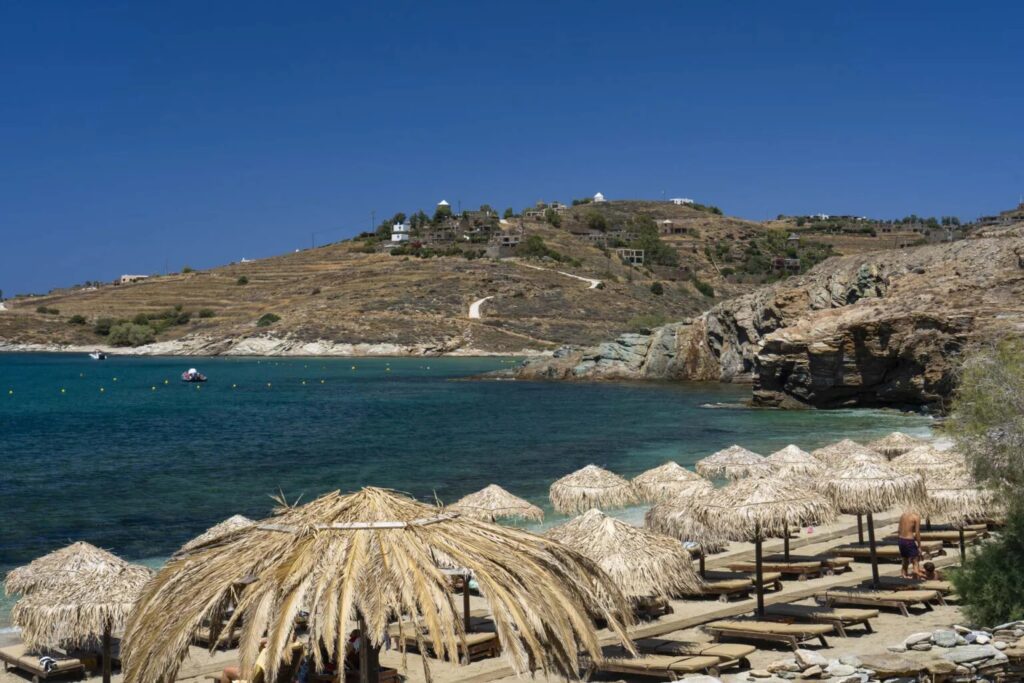
Of course, the main attraction for vacationers is the wonderful blue-green waters of Koundouros. These waters deepen gradually and create a charming composition as they combine with the golden strips of sand and with the general feeling that you are swimming under the wings of stone-built, traditional windmills of the Cyclades.
In addition, the rockiness of the surrounding landscape creates a lovely seabed, ideal for diving and snorkelling enthusiasts to explore. So, if you love underwater landscapes, bring a mask and snorkel.
Due to its rapid development in recent years, Koundouros is now considered one of the most crowded shores of Kea. On summer weekends, especially, the crowd can seem disturbing to those who prefer quieter situations, thus making them move away to the south of the department.

In the locality known to the locals as ‘Kambi’, there are several coves, ideal for those looking for more privacy. On the other hand, with summer on the island lasting into autumn, Koundouros remains alive until October.
For many, the best time to enjoy it properly is autumn.
How will you get to Koundouros?
Koundouros is a very easily accessible beach since it is only 16 kilometres from the capital, Ioulis, and around 20 kilometres from the port of Korissia. When you turn to the southwest and follow the provincial road Korissias – Poisson – Koundourou – Kato Merias, estimate that you will arrive within 20 minutes to half an hour.
During the summer season, a local bus route also operates, running the route Poisses – Koundouros.
Koundouros is an organised coast, so when you arrive, you will find beach bars with umbrellas, sunbeds, and everything else you might need. The shallow waters make it an attractive destination for families vacationing with small children.
On the other hand, if you prefer something more unorganised, there is also the possibility to bring your own equipment.
In this case, a useful tip for busy summer days is to arrive early and head to the eastern part of the beach to find some natural shade under the tamarisk trees.
This article first appeared in Travel. Translated by Paul Antonopoulos.
READ MORE: Kalamata: Exploring the vibrant Peloponnesian city.

